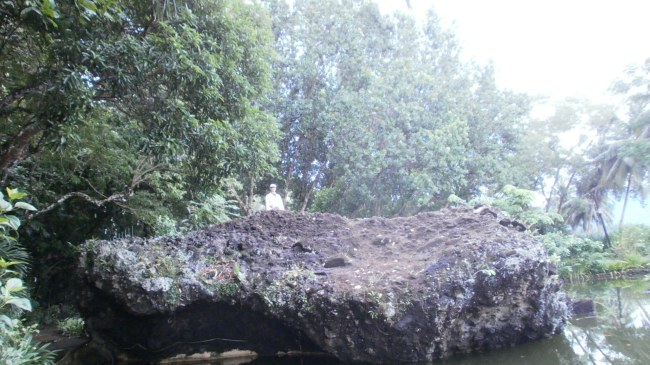Dipolog has always been in Dr. Atty. Noel Guivani Ramiscal’s to do list of places to visit in the Philippines. This is mainly due to the fact that one of the Philippines’ national heroes, Dr. Jose Rizal, lived, suffered, loved and gave so much of himself to the people in this enchanting place, particularly Dapitan. Dr. Ramiscal is a frequent visitor of the Calamba Shrine in the late 1990’s when he was writing a cycle of poems concerning the friendship between Jose Rizal and Ferdinand Blumentritt, which ended up in his first (and sold out) book of poetry in four languages, “NOELSES”, published by the UST Publishing House. So when the Integrated Bar of the Philippines Zamboanga del Norte Chapter and UP IAJ invited him to give two Mandatory Continuing Legal Education lectures for their lawyers, it was with the deepest gratitude that Dr. Ramiscal accepted, hoping against hope he would get a chance to visit Dapitan.
When he got there on June 26, 2013, at the Top Plaza Hotel owned by Governor Uy, he found out that the Dipolognons are a generous, hospitable and closely knit lot, with smiles and hand waves to spare. The lawyers were quite witty and accommodating. Some are fiercely stylish like Attys. Mary Faith, Meiji, Richele and Rowena. 
In the “bonding session” at the dimly lit Café Bon, with Judge Rose, Attys. Rosal, Val and Arnold. Mesdames Mabel, Aleth and the gracious IBP and UP IAJ staff, he shared his 
penchant for chocolate, chili, baking, colors, and gems amid scrumptious food and grand company. The positive energy and topics discussed spilled over into Dr. Ramiscal’s lectures the following day.
His lecture on Electronic Evidence tackled recent developments in the areas of, among others, email authentication, digital photography, website authentication, risks in online social networking, online defamation and pre-crime software. He also imparted to the audience his views concerning dubious features of the Cybercrime Prevention Act of 2012, which has been the subject of about 15 petitions in the Philippine Supreme Court that challenged its constitutional and legal validity and sought to stop its implementation, as well as the serious flaws and gaps in the Rules on Electronic Evidence. 
Dr. Ramiscal’s follow-up lecture, “Online Human Trafficking” exposed some of the modus operandi that human traffickers use to lure their victims via the Internet. He traced the related developments of the Internet with the pornography industry and how technological growth fueled by the sex industry can come at such a high price. The internet has also made it easier for human surrogacy agencies to flourish as well as the sales of female children, adoloscents and women by international marriage brokers as “cyber brides”. Although the Philippines’ Human Trafficking Law had a provision that prohibited the use of the Internet to facilitate or aid human trafficking, a consultant (Dr. Liquigan) of the Department of Justice’s program against human trafficking stated to Dr. Ramiscal that the internet dimension of this crime has not been explored yet by the DOJ.
The Dipolog lawyers were appreciative of Dr. Ramiscal’s lectures. Some of them even bought his books [Great Shout outs to Attys. Angela, Felin, Joji, Jinky, Sherril and Jordanne (Bajamunde Chan, who was not in the photo)!]. 
One of the best highlights of his visit was the chance given by the IBP President, Atty. Rosal for him to go to Rizal’s place in Dapitan chauffeured by Mr. Nonoy and guided by Ms. Aleth.

When he entered the premises of Dapitan’s hallowed ground, it had been raining but he felt quite warm. The vibrations in this place were gentle but heightened. He felt his spirit lift when he ascended the natural rock promontory that was probably done by Dr. Rizal with his lover, Josephine Bracken, countless times when they were together. The scene from this rock was simply majestic! Dr. Ramiscal bathed and breathed in and out the gentle rays of the sun that was trying to come out, as well as the wisps of the wind that graced his face. The most important e-discovery he made in Dipolog was that his Olympus Camera captured his state of being at this time as a pillar of light. Ms. Aleth took his picture at different angles, positions and directions with different camera settings. The background was always clear, but all his pictures showed his body suffused and surrounded with golden light.  And a curious thing happened when Ms. Aleth accidentally took a recording of him changing the setting in his camera, with her own camera. Ms. Aleth’s camera recorded a golden image flash to the left side of Dr. Ramiscal. Upon seeing the image, Dr. Ramiscal blessed it as a sign of Divine Providence for being in Dipolog at last! Thanks again to everyone who made this “dalaw” super especial!
And a curious thing happened when Ms. Aleth accidentally took a recording of him changing the setting in his camera, with her own camera. Ms. Aleth’s camera recorded a golden image flash to the left side of Dr. Ramiscal. Upon seeing the image, Dr. Ramiscal blessed it as a sign of Divine Providence for being in Dipolog at last! Thanks again to everyone who made this “dalaw” super especial!













